The Camino de Santiago, an ancient network of pilgrimages leading to the shrine of the apostle Saint James the Great in the cathedral of Santiago de Compostela in Galicia, Spain, has for centuries beckoned pilgrims and adventurers alike. Today, it attracts thousands of modern pilgrims from around the globe, drawn not only by religious fervor but also by the quest for personal growth, adventure, and the unparalleled beauty of the Spanish countryside. This guide aims to provide an insightful overview of the Camino, offering practical advice, reflections on the journey’s deeper significance, and tips for fully engaging with the rich local cultures encountered along the way.
The Camino de Santiago
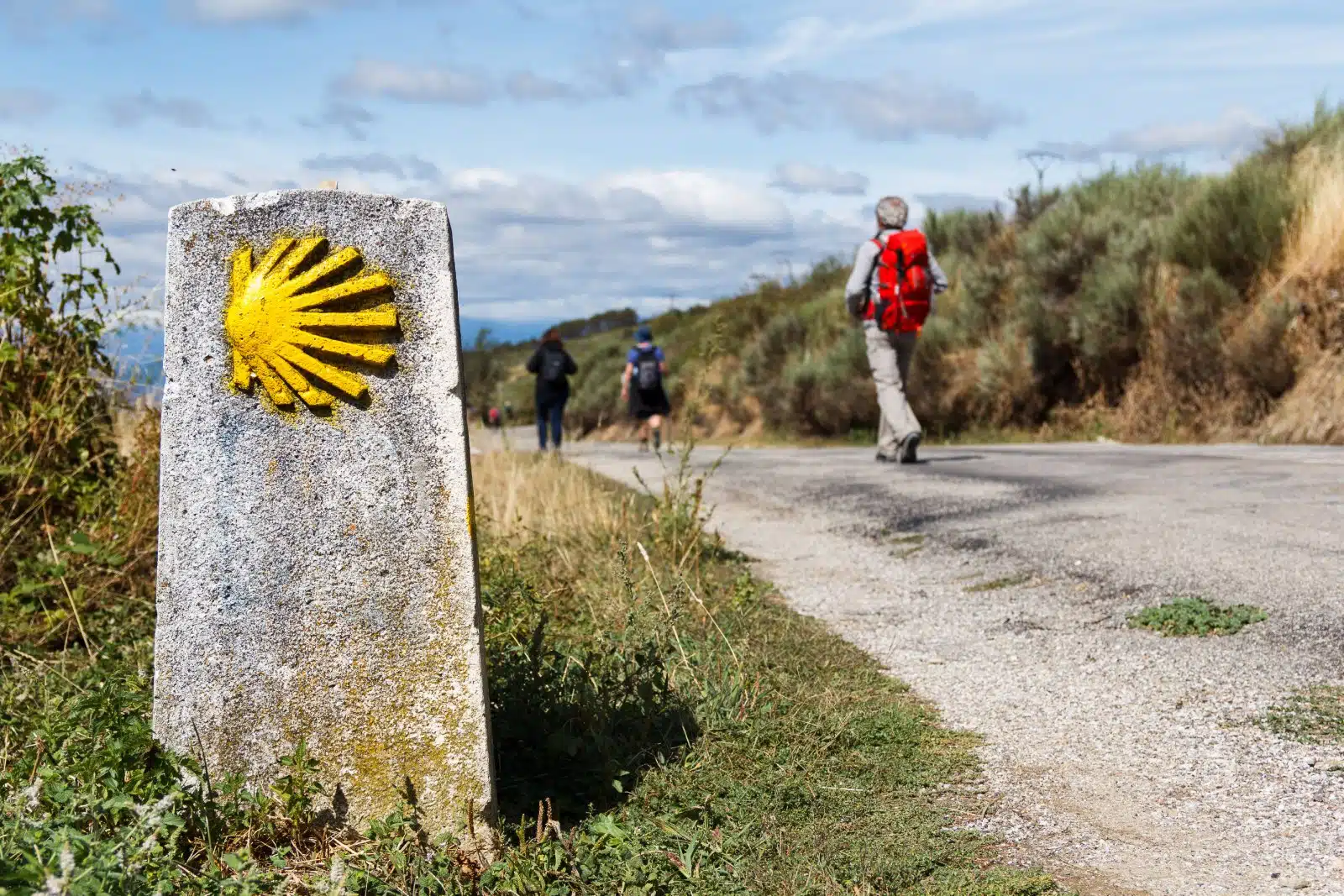
Image Credit: Shutterstock / gregorioa
The Camino de Santiago comprises several routes, each with its own unique character and challenges. The most popular is the Camino Francés, which stretches approximately 800 kilometers from Saint-Jean-Pied-de-Port in France to Santiago de Compostela in Spain. Other notable routes include the Camino Portugués, the Camino del Norte, and the Camino Primitivo. Regardless of the chosen path, pilgrims (or “peregrinos”) can expect a journey that weaves through varied landscapes, from bustling cities and quaint villages to serene forests and rugged coastlines.
Insider’s Tip
Engage with local traditions and communities by participating in communal meals and local festivals whenever possible. These experiences offer a deeper understanding of the regions you’re passing through and provide opportunities to connect with fellow pilgrims and locals alike.
When to Travel
The best time to embark on the Camino de Santiago is during the spring (April to June) or fall (September to October). These seasons offer milder weather, fewer crowds, and the natural beauty of the landscape in bloom or the rich hues of autumn.
How to Get There
Most international pilgrims fly into major Spanish cities such as Madrid, Barcelona, or Bilbao, depending on their starting point. From there, domestic travel options like trains, buses, or internal flights can transport you to the beginning of your chosen Camino route.
Preparation Tips
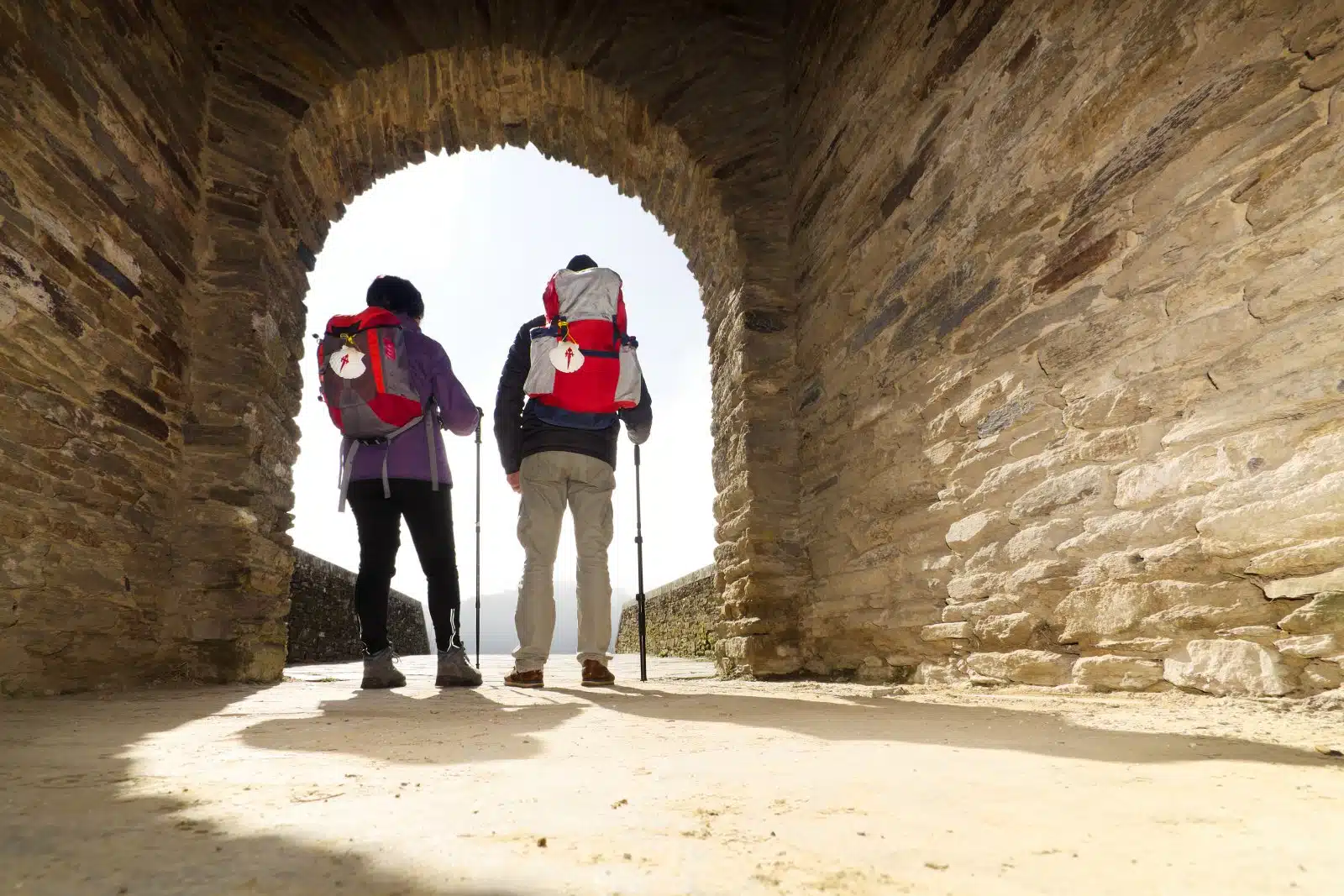
Image Credit: Shutterstock / Gena Melendrez
Preparing for the Camino involves physical, mental, and logistical planning. Physically, start by gradually increasing your walking distance weeks or even months before your trip. Pack as lightly as possible, focusing on essentials like good-quality walking shoes, a lightweight sleeping bag, and versatile clothing layers. Mentally, prepare for the journey by setting personal intentions or goals, whether they’re spiritual, reflective, or simply to complete the trek.
Accommodations

Image Credit: Shutterstock / Dragana Gordic
Accommodations along the Camino range from traditional pilgrim hostels (“albergues”) to private hotels and guesthouses. Booking in advance is recommended during peak seasons, though many pilgrims choose to find accommodations spontaneously to maintain flexibility in their journey.
Engaging with Local Cultures
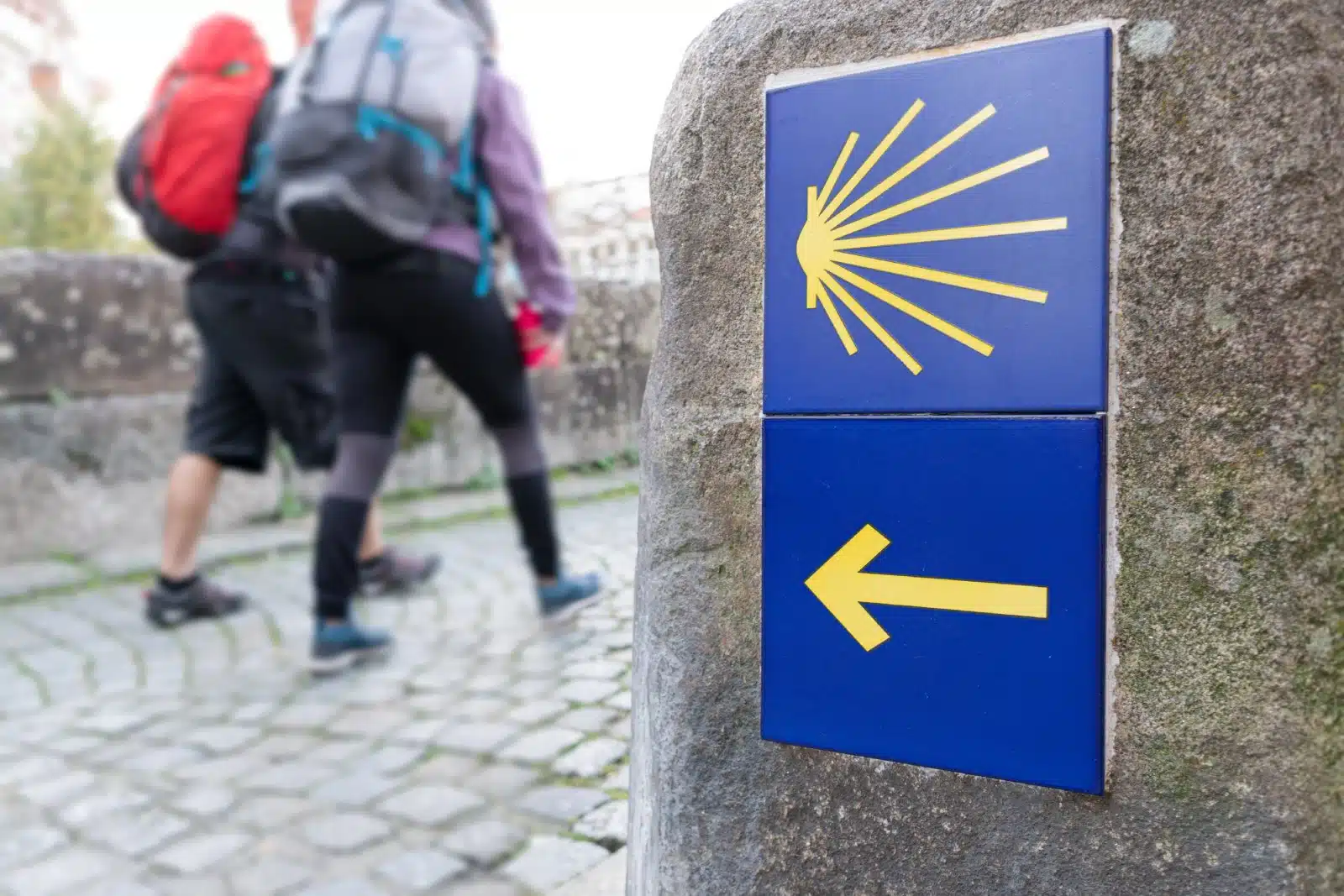
Image Credit: Shutterstock / Formatoriginal
The Camino de Santiago passes through diverse regions with its own customs, cuisine, and dialects. Take the time to learn a few basic phrases in Spanish (and Galician, if traveling in Galicia) to enrich interactions with locals. Sampling regional specialties and wines is a delight and a pathway to understanding the local way of life.
Spiritual and Personal Growth
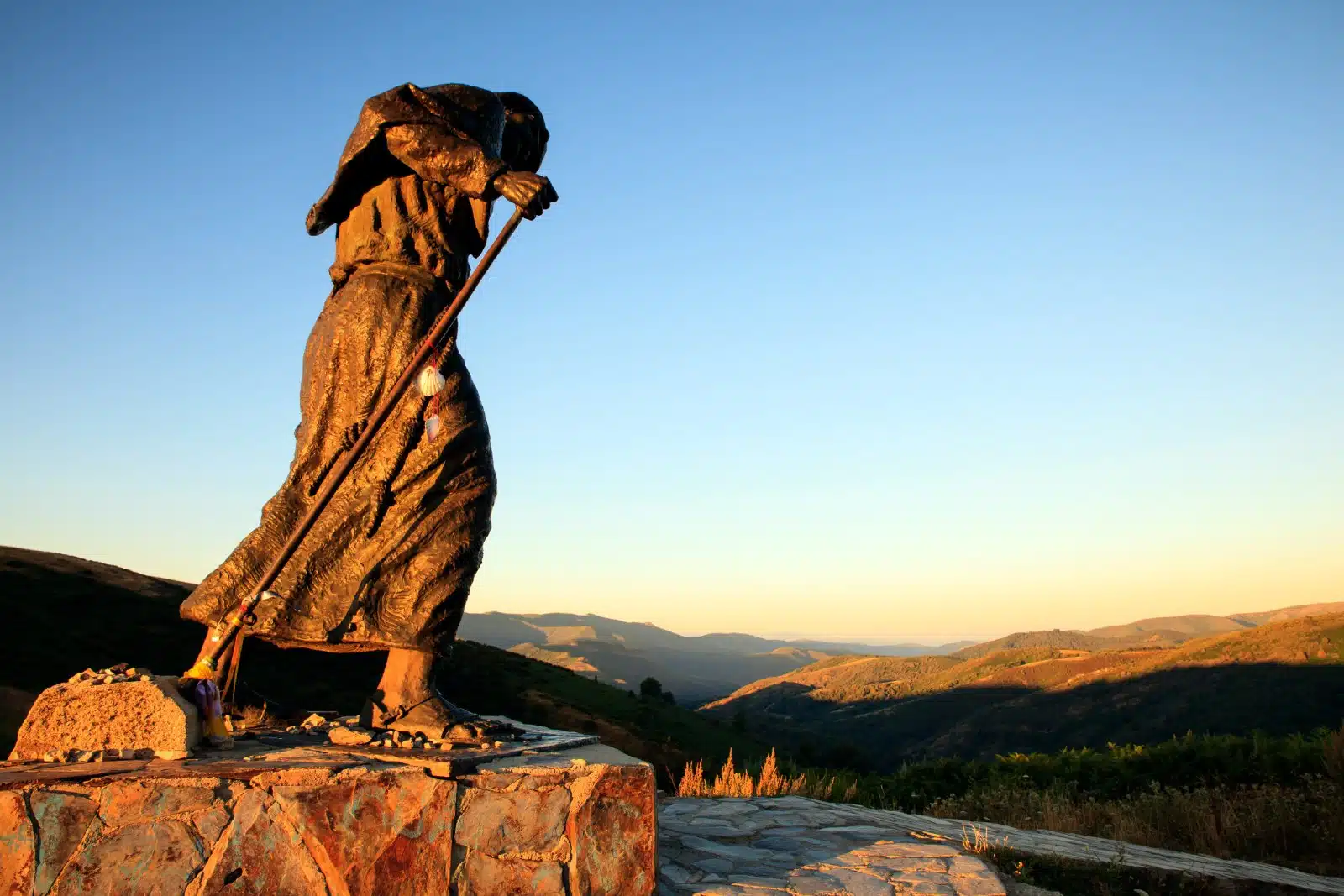
Image Credit: Shutterstock / bepsy
While the Camino has religious origins, many modern pilgrims walk the route for a variety of reasons, including the search for personal clarity, healing, or simply the challenge of the trek itself. Reflective practices such as journaling, meditative walking, or participating in local religious services can enhance the spiritual dimension of the journey.
Walking the Camino de Santiago is an unforgettable experience that offers much more than the physical challenge. It’s a journey that can transform your understanding of yourself and the world around you, filled with moments of profound beauty, unexpected friendships, and deep personal insights. Whether you’re seeking spiritual fulfillment, adventure, or simply the pleasure of walking through stunning landscapes, the Camino de Santiago promises a journey of a lifetime.
Highlights of the Camino de Santiago
1. Pyrenees Crossing (Saint-Jean-Pied-de-Port to Roncesvalles)
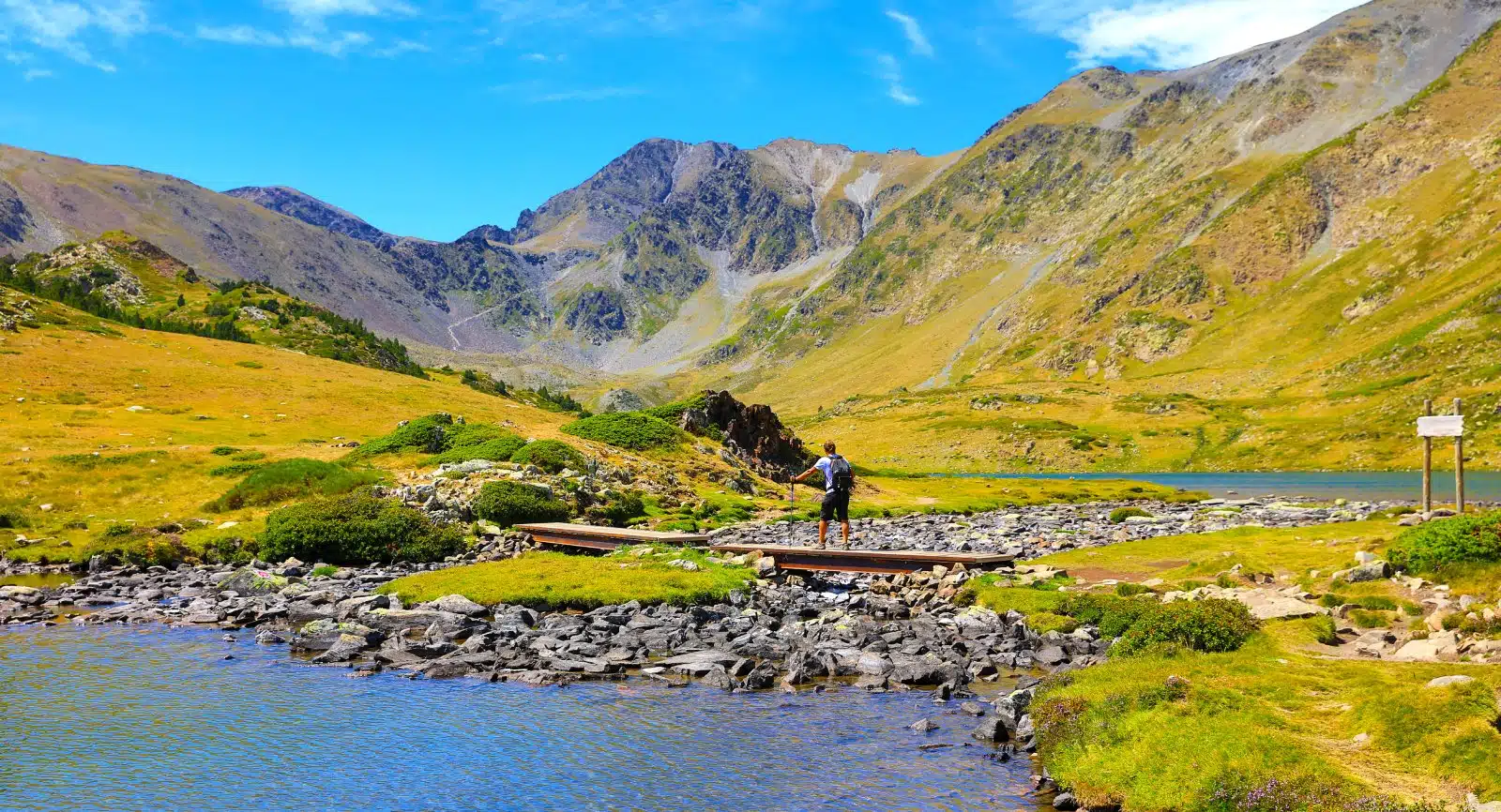
Image Credit: Shutterstock / margouillat photo
The initial stage of the Camino Francés offers breathtaking views as it winds through the Pyrenees mountains. This challenging but rewarding segment sets the tone for the pilgrimage, offering a mix of awe-inspiring landscapes and a sense of beginning a significant journey.
Insider’s Tip
Start early to make the most of the cooler temperatures and to enjoy the sunrise over the mountains.
2. Pamplona
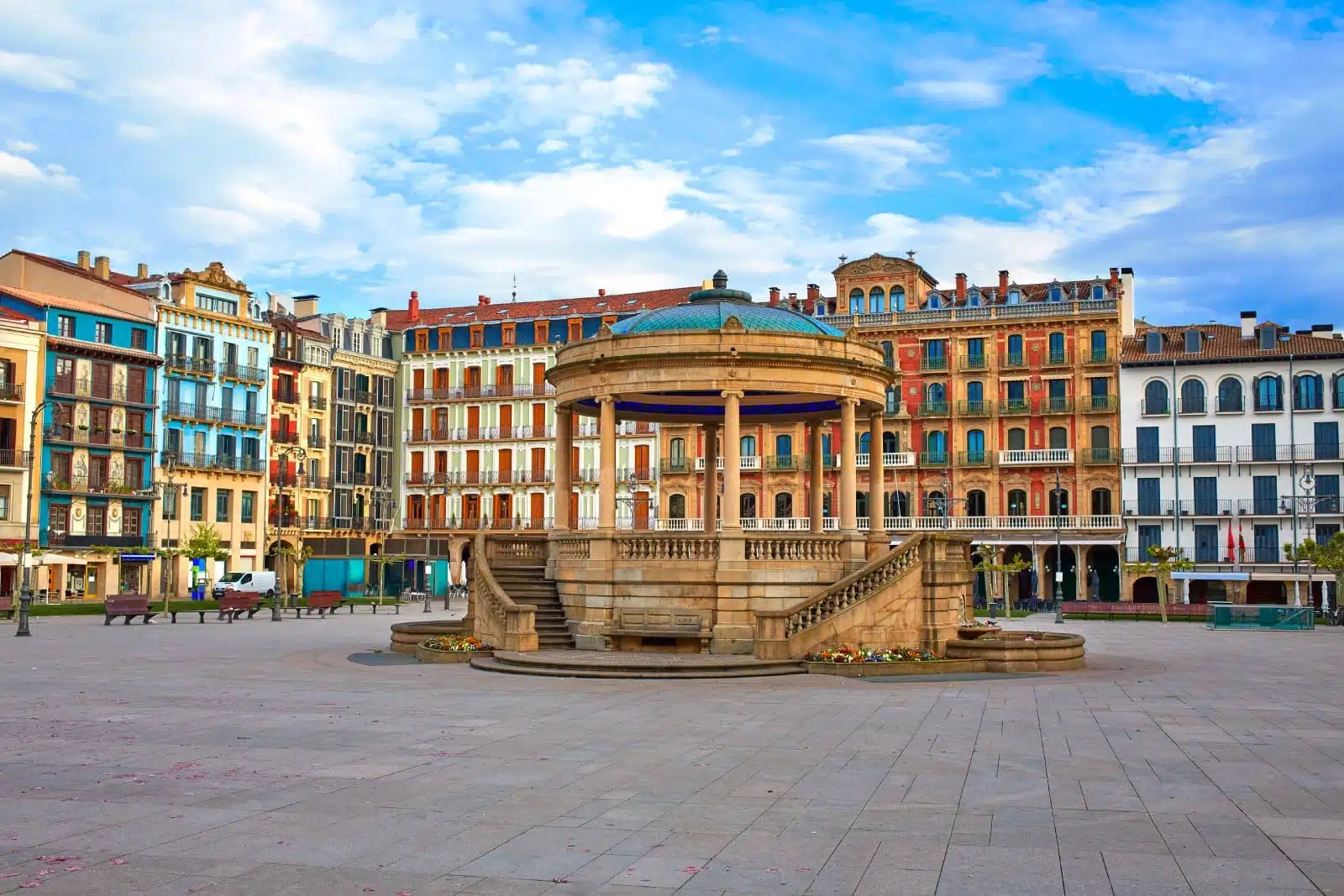
Image Credit: Shutterstock / lunamarina
Famous for its Running of the Bulls, Pamplona offers a rich historical tapestry, beautiful parks, and a vibrant culinary scene. Pilgrims can enjoy the city’s lively atmosphere and architectural beauty walking through its ancient streets.
Insider’s Tip
Sample traditional Basque cuisine at a local pintxos bar.
3. Burgos Cathedral
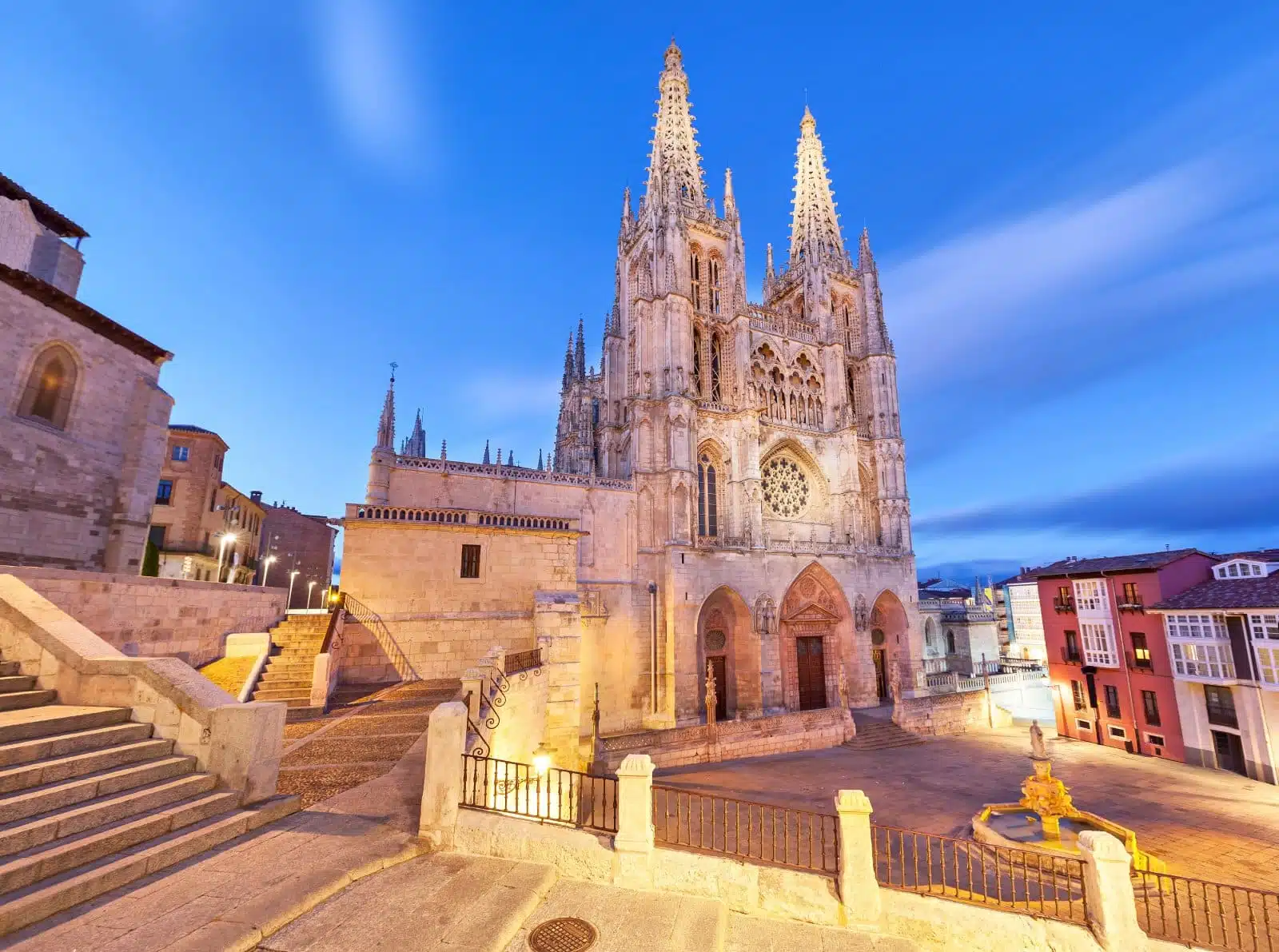
Image Credit: Shutterstock / Sergey Dzyuba
The Gothic Cathedral of Burgos is a UNESCO World Heritage site and one of the architectural highlights of the Camino. Its stunning façade and interior are a testament to Spain’s artistic and spiritual history.
Insider’s Tip
Allocate time to explore the cathedral’s interior, including the tomb of El Cid.
4. León’s Historical Center
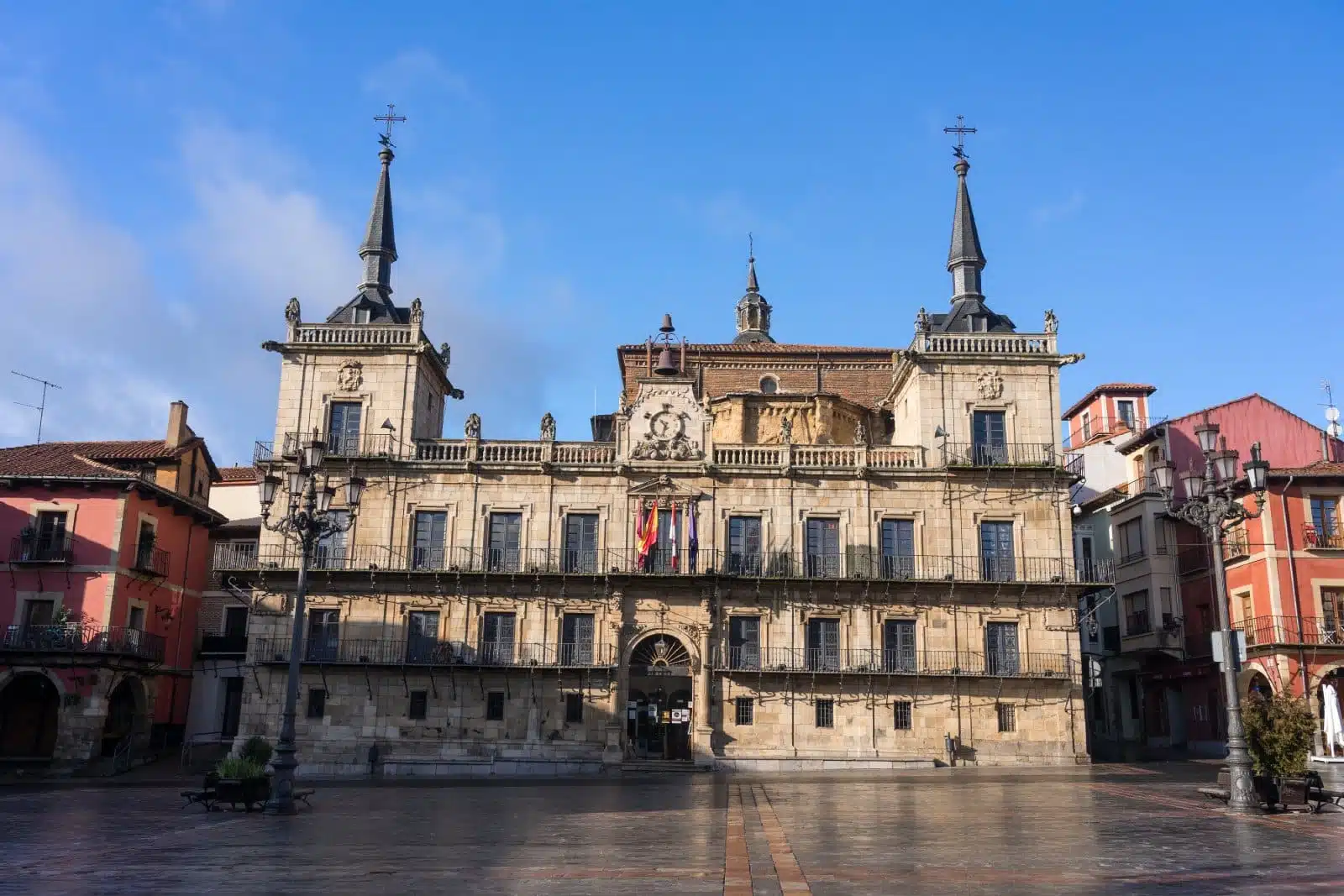
Image Credit: Shutterstock / JlAlvarez
León is a city rich in history and culture, with its ancient Roman walls, the Gothic León Cathedral, and the Romanesque Basilica of San Isidoro. The city’s historical center is a blend of architectural styles and epochs.
Insider’s Tip
Visit the Casa Botines, designed by Antoni Gaudí, for a unique architectural experience.
5. Cruz de Ferro
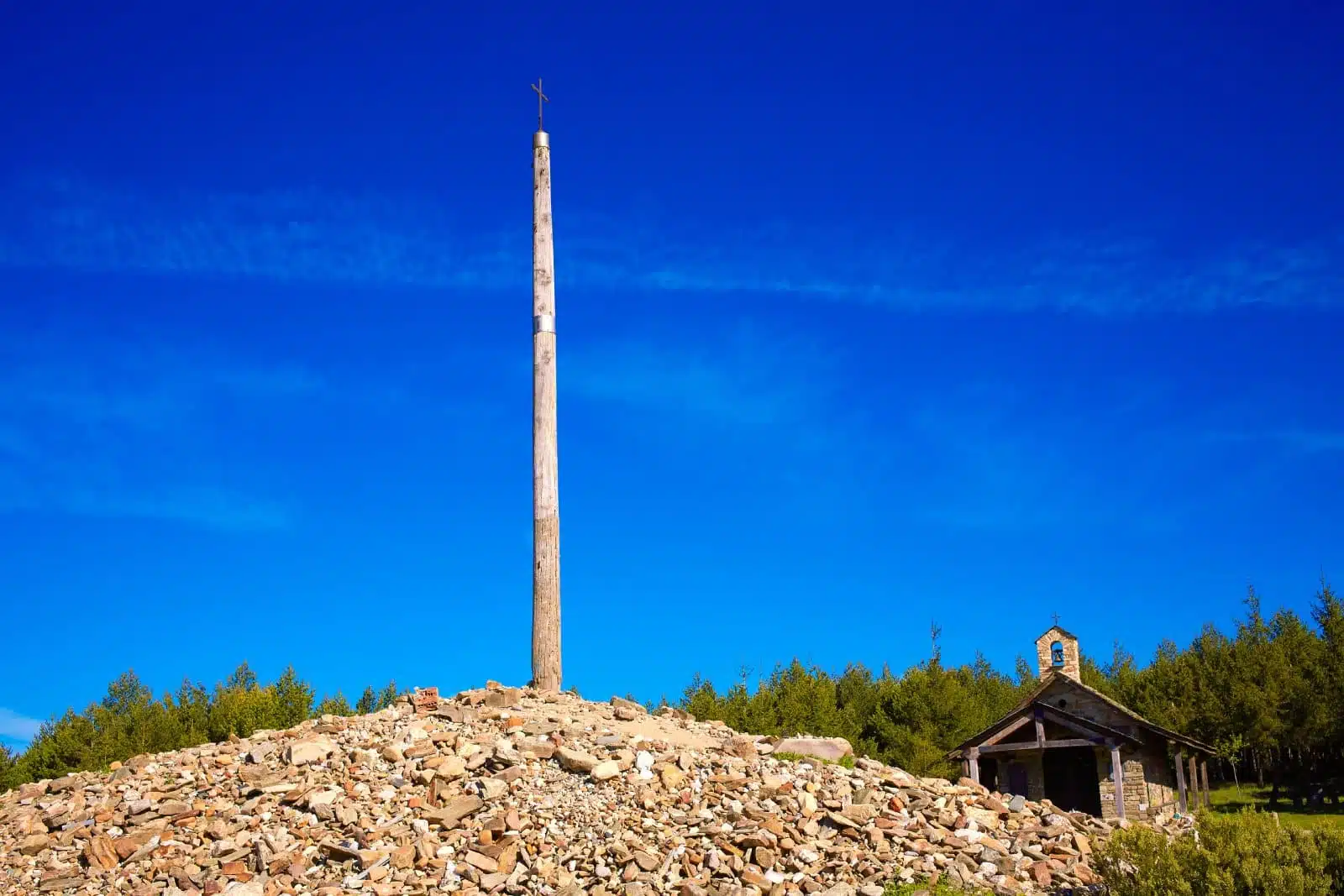
Image Credit: Shutterstock / lunamarina
This simple iron cross atop a wooden pole, surrounded by a mound of stones left by pilgrims, is one of the most symbolic sites on the Camino. Pilgrims traditionally bring a stone from home to leave at the base of the cross to symbolize their burdens or prayers.
Insider’s Tip
Reflect on your journey thus far and what you hope to leave behind at this poignant spot.
6. O Cebreiro
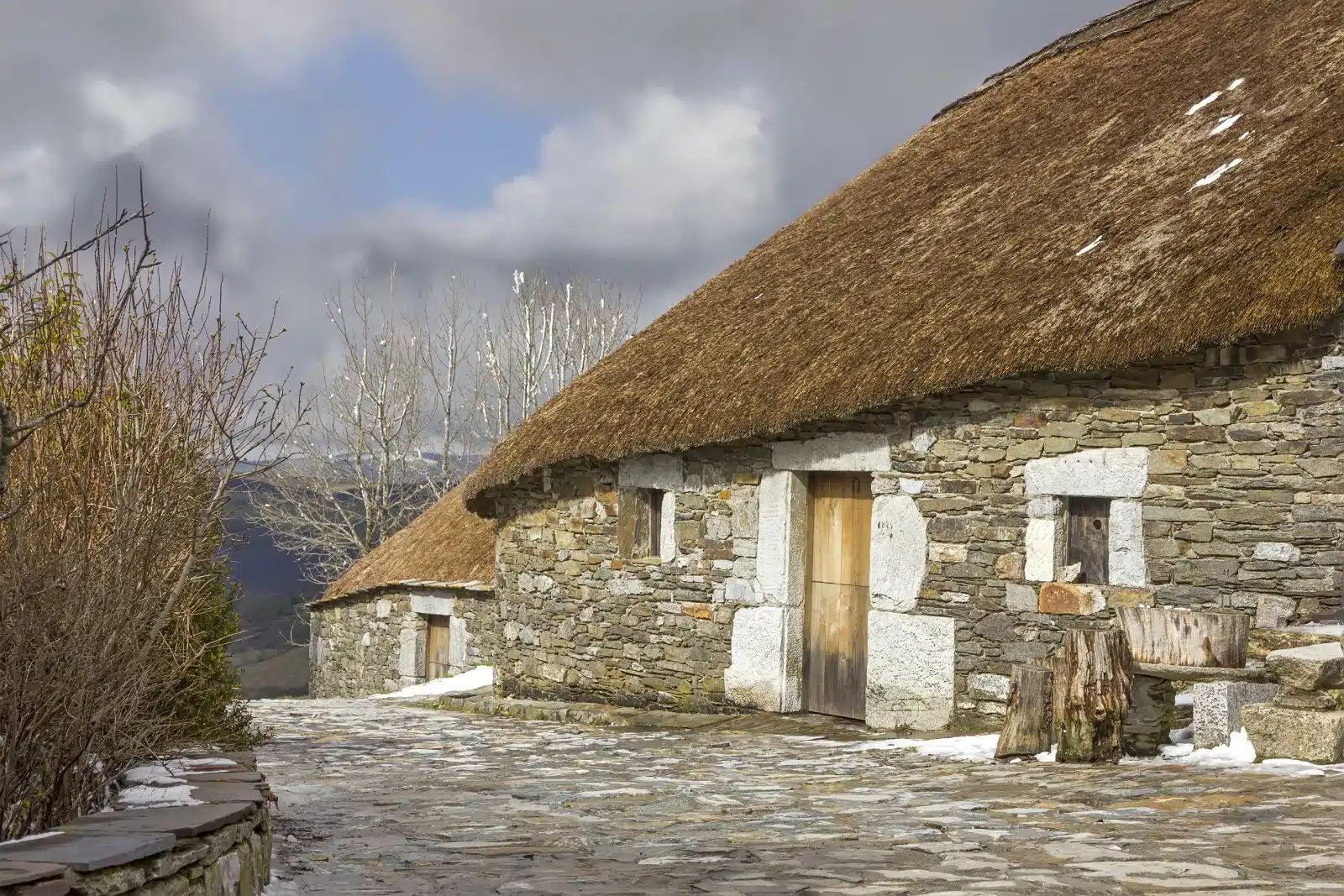
Image Credit: Shutterstock / Guillermo Pis Gonzalez
A small village in Galicia, O Cebreiro marks the entry into the Galician landscape. Known for its traditional pallozas (stone and straw houses) and its stunning panoramic views, it’s a gateway to the Celtic-influenced region of Galicia.
Insider’s Tip
Try the local cheese, Queso de Cebreiro, which is unique to the area.
7. Santiago de Compostela Cathedral
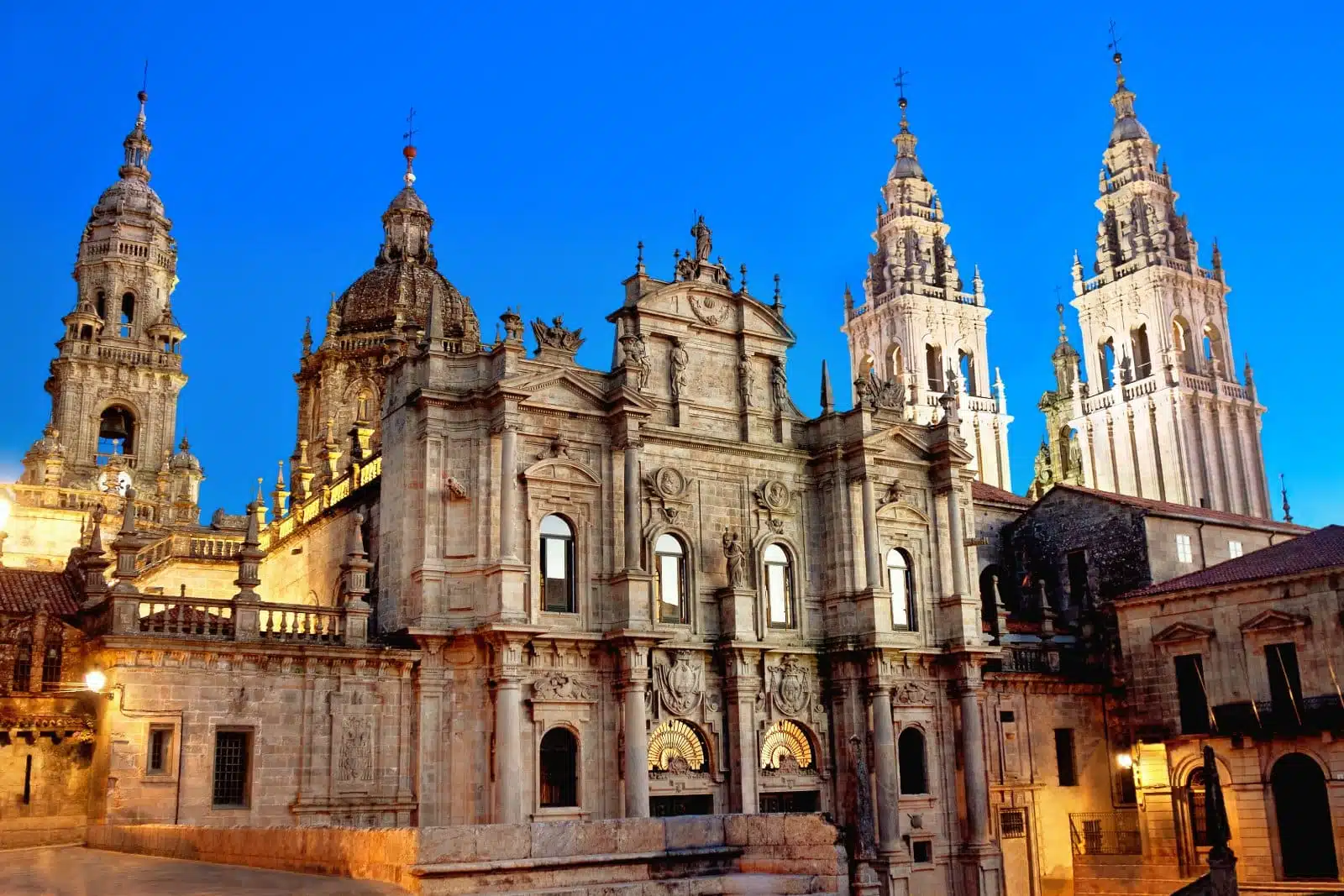
Image Credit: Shutterstock / Migel
The culmination of the Camino, the cathedral is a masterpiece of Romanesque architecture with later Gothic and Baroque additions. The Pilgrim’s Mass, held daily, is a moving experience, whether you’re religious or not.
Insider’s Tip
Attend the Pilgrim’s Mass early to secure a good spot, especially if you wish to see the Botafumeiro swing.
8. Finisterre

Image Credit: Shutterstock / lunamarina
Though not part of the traditional Camino, many pilgrims extend their journey to Finisterre, once believed to be the end of the world. The lighthouse and the ocean offer a symbolic end to the pilgrimage, with stunning sunsets over the Atlantic.
Insider’s Tip
Participate in the ritual of burning a piece of your Camino gear as a symbol of transformation and renewal.
The Bottom Line
These highlights represent just a fraction of the experiences awaiting pilgrims on the Camino de Santiago. Each step of the journey offers its own unique beauty, challenges, and opportunities for growth, making the Camino a truly transformative experience.
More From The Green Voyage
12 Best Practices for Sustainable Travel in 2024 – How to Travel With Minimal Environmental Impact
Unlocking Hotel Perks – A Traveler’s Guide to Maximizing Hotel Reward Programs for Optimal Benefits
Travel Hacks for Frequent Flyers – 6 Tips and Tricks to Make the Best of Air Travel
The post Walking the Camino de Santiago – A Modern Pilgrim’s Guide 2024 first appeared on The Green Voyage.
Featured Image Credit: Shutterstock / Vitalii Nesterchuk.
For transparency, this content was partly developed with AI assistance and carefully curated by an experienced editor to be informative and ensure accuracy.
Tips for Trip Success
Book Your Flight
Find an inexpensive flight by using Kayak, a favorite of ours because it regularly returns less expensive flight options from a variety of airlines.
Book Your Hotel or Special Accommodation
We are big fans of Booking.com. We like their review system and photos. If we want to see more reviews and additional booking options, we go to Expedia.
You Need Travel Insurance!
Good travel insurance means having total peace of mind. Travel insurance protects you when your medical insurance often will not and better than what you get from your credit card. It will provide comprehensive coverage should you need medical treatment or return to the United States, compensation for trip interruption, baggage loss, and other situations.Find the Perfect Insurance Plan for Your Trip
